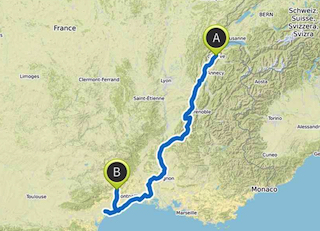
Geneva – Seyssel – Lac de Paladru – Pont-en-Royans – La-Chapelle-en-Vercors – Saillans – Montélimar – Orange – Pont du Gard – Nîmes – Aigues-Mortes – Marseillan – Béziers
(800 km cycled)
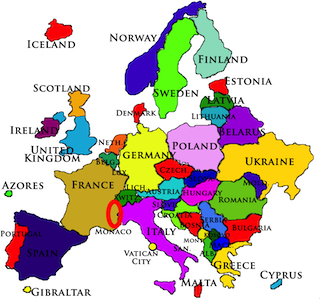
It was Kurt’s turn to surprise Darina with a holiday. As always, spring wasn’t approaching half fast enough, but this could be helped. Our previous tours south still left him with enough beautiful and interesting places to string another great trip together. The ViaRhôna was the inspiration, but we did take liberties with the itinerary.
Snow was a recurring theme before we left St Gallen, but by the time our train had chugged as far as Lake Geneva, things had brightened up considerably. We stopped long enough to take a few pictures of the Jet d’Eau in this multicultural United Nations city, and then we rode through green fields and budding trees to the ancient small town of Seyssel, on the Rhone.
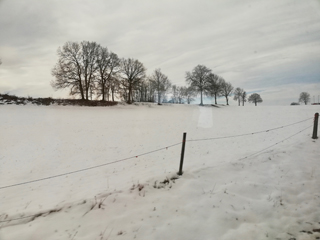
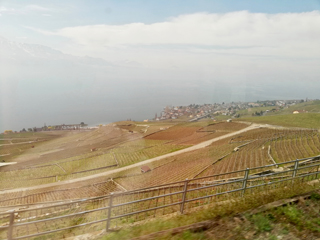

The climb up to Lac de Paladru was steep enough to warm us up in the inclement weather that followed. However, the 15% incline was too much for Kurt’s packed bike – the chain snapped! It was a Sunday afternoon and we were in the middle of nowhere, 12 km from the next village. A quick Internet search revealed that the bike shop there wouldn’t open until Tuesday morning! Kurt was not a happy man, to say the least. There was nothing for it but to use the bike as a scooter for the downhills and be towed by Darina on the flat all the way to Charavines, on the south side of the lake.
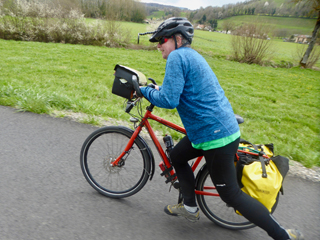
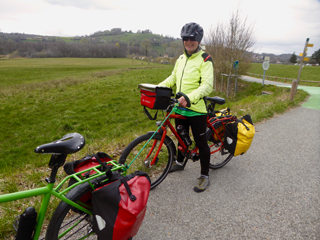
As luck would have it, the bike shop happened to be holding its biannual Sunday afternoon exhibition, and friendly Franck from Natura Velo had a new chain mounted in no time. Kurt’s mood was restored and after the best meal of this trip at Hotel les Bains (we ate very well everywhere), he settled back into holiday mood.

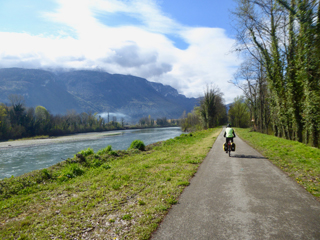
The new chain was essential as Kurt had some more climbing on the agenda: The magnificent Vercors Regional Natural Park and mountain range. The Gorges du Nan and the Gorges de la Bourne (D531) are prime examples of the many feats of engineering in this limestone wonderland.

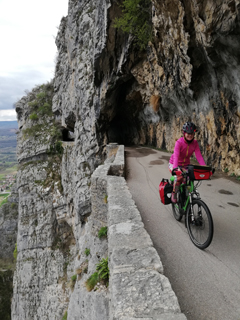
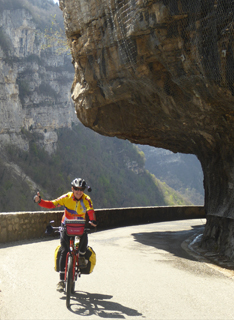
Pont-en-Royans, a colourful medieval village perched on top of a steep rock face on the River Bourne, seems to be hanging on for dear life, and a certificate of bravery should go to anyone willing to spend a night on one of the ancient wooden chicken-coop balconies on the 6th/7thfloor!
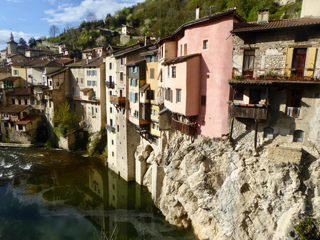
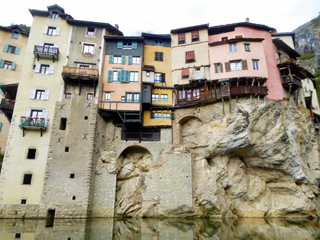
Following the Bourne uphill, we came upon one of the most beautiful caves we have ever seen. The Grottes de Choranche are fed by two rivers that form a lake inside the spacious caverns, full of tastefully-lit spaghetti stalactites. There are also a few resident olms or depigmented salamander-type amphibians that have adapted to cave life over the years by developing their sense of touch and smell rather than their sight, can survive for months without food and live for about 90 years.


The Vercors’ high seasons are in winter for skiing and in summer for hiking. The constant barking in the background was a reminder of the area’s other big attraction: dog sledding. There are over 50km of signposted trails up on the Vercors Plateau that would be even ideal for fat biking in winter.

Travelling around Easter is clearly off-season, as we discovered after checking into the Sports Hotel in La Chapelle-en-Vercors only to find all three eateries in town closed. The whole place was deserted (no wonder), it was bucketing down, the wind could have cut you in two, and there wasn’t even a petrol station for a few emergency snacks. For those of you who know Kurt well, starving is not an option! The idea of emergency snacks wasn’t even considered. Finally, we found a lad who knew about Auberge Le Collet, 2 km out of town. So, we braved the elements and were duly rewarded with an exceptionally creative and delicious 3-course meal.
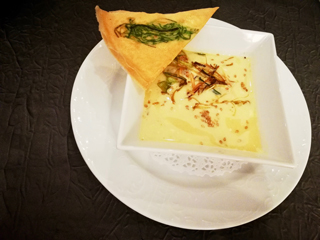
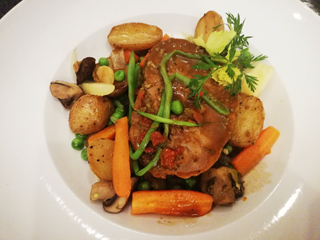
The Vercors has a tragic history. As a stronghold of the Resistance movement during WWII, they declared the Free Republic of Vercors on July 3, 1944, shortly before the liberation of France. Sadly, the area got more encouragement than support from the Allies and therefore lost about 800 lives, civilian and resistance fighters alike. Vassieux-en-Vercors has a well-organized museum that tells about the big dreams and gory reality of that fatal time. 97% of the buildings in town were totally destroyed by the bombings and the whole town had to be rebuilt from scratch.
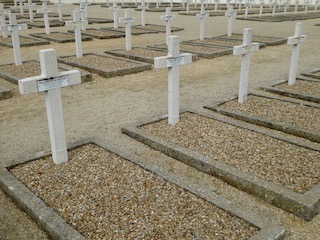
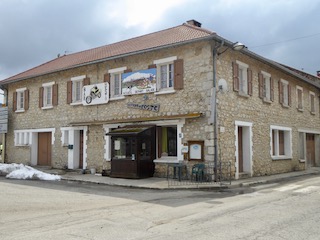
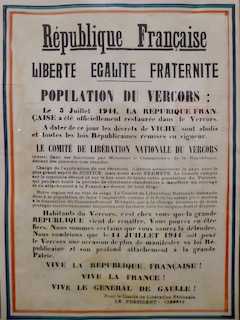
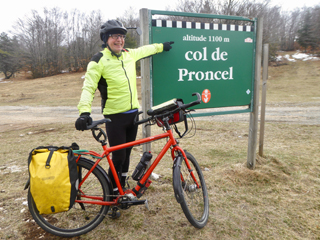
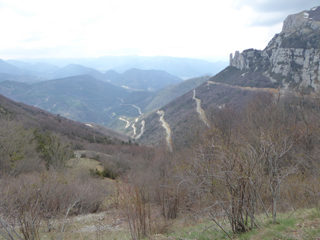
After a 20km downhill ride to the Drôme Valley we ended up in another little gem of a place. Saillans is a cute, compact small town where houses are very supportive of each other. The many arches between them are proof enough. Elisabeth and André-Yves’ excellent hospitality in Les Jeunes Chefs Restaurant & Hotel was topped off with another outstanding dinner cooked to perfection from locally-sourced ingredients.
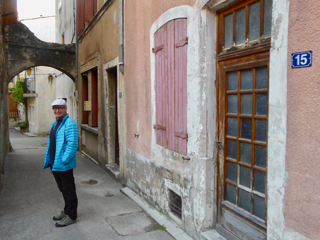
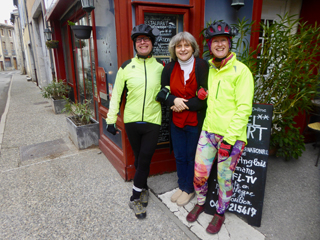
When Darina asked Kurt for a hint about what he had planned for this trip, Kurt foolishly mentioned nougat, before checking what Aunty Google knows about that sticky delight. Montélimar pops up on many hits, but Darina probably didn’t want to spoil the surprise and ignored the details. Anyway, our factory tour in Montélimar revealed that while Montélimar is not the only place to mix egg white, honey and nuts to make nougat, it is the best. By far. Mais bien sûr! We could have visited one of the many wineries along the Côtes du Rhône to hear similar arguments, but we just enjoyed cycling through the vineyards with their tender green shoots.
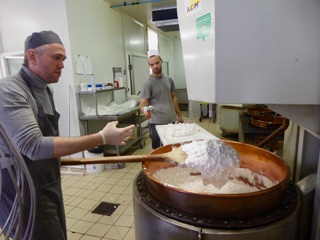
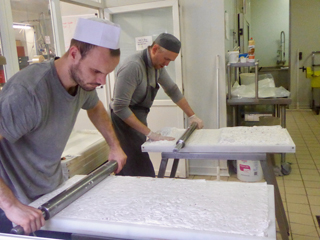
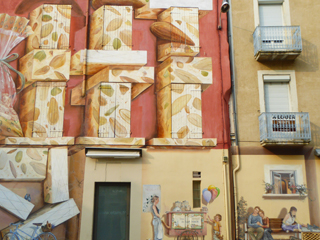
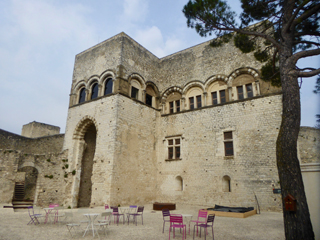
Bicycle routes in France can surprise at times. Back on the Via Rhona, 4 km before Orange, we saw a bike sign signalling that it was still 22km … if you turn right. Right? Non! Straight. The sheer size of the Roman theatre in Orange is very impressive and must have been overwhelming to the soldiers of Caesar’s legions that were given land to settle there for their retirement.
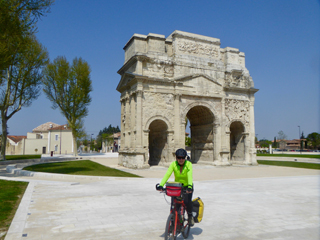
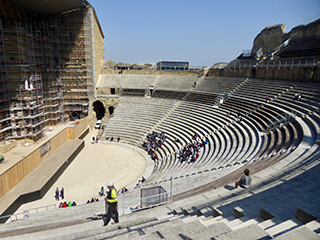
The Rhone Valley is famous for the Mistral wind that can blow up to 135kmph. We experienced 88kmph, and it felt like an e-bike experience, except of course, when we were crossing bridges. For anyone who likes a challenge, plan your trip from south to north!
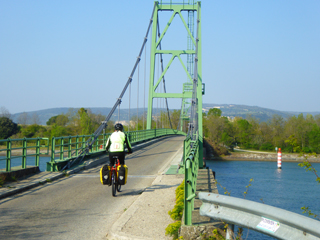
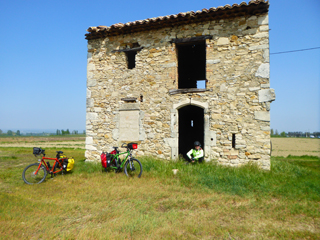
Deep in Roman territory, next on our list was Pont du Gard, an impressive and cyclable aqueduct that supplied Nîmes with water from a source 50km away. Nîmes boasts a few monuments from Roman times, such as a huge arena and the Maison Carrée, a former temple. Its lovely park with fountains and ponds from the 17thcentury, in addition to its laid-back town centre, so typical of southern France, makes it a pleasant stop on any trip in Provence.

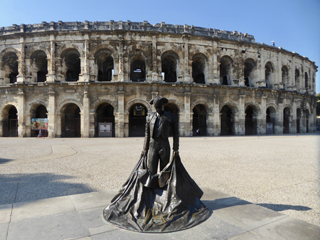
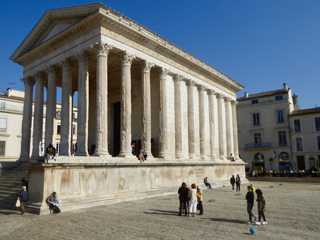
To give the Romans a break, we decided that it was time to go flamingo spotting. Cycling the western end of the Camargue along the Rhone-Sète Canal, we happened upon the walled town of Aigues-Mortes instead. A tad touristy, but impressive. The next town, La Grande-Motte, is not exactly what we would call a place you have to see before you die, but then, dying before seeing it wasn’t an option either! Especially considering all the great places (and flamingoes) on the other side.
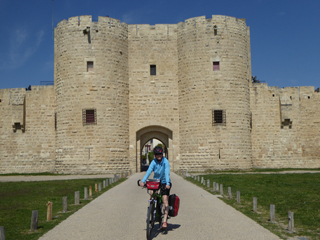

The Rhone-Sète Canal and its bicycle path crosses a few étangs (lagoons), so we could cycle across on the dam, with boats being the only traffic we encountered. In Sète, this canal turns into the Canal du Midi, leading all the way to the Atlantic Ocean. Actually, we cycled quite a lot of this on the final stage of our Andes trip.
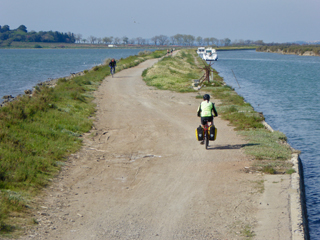
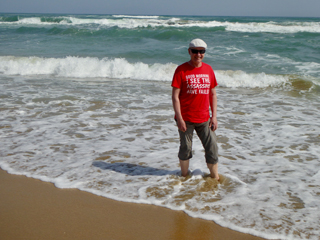
In Marseillan, we enjoyed the hospitality of Kurt’s sister Anita and family in their retirement refuge (that theme again – must be Kurt’s age!). From there, we did a number of day trips to Montpellier, Saint-Guilhem-le-Désert and Béziers, famous for its nine locks on the Canal du Midi.
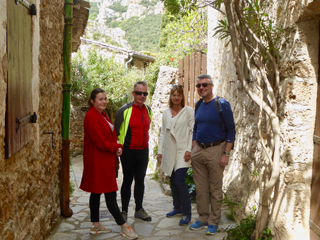
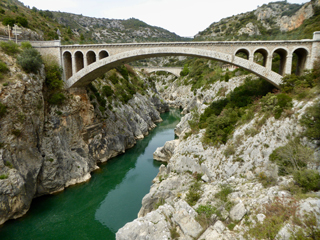

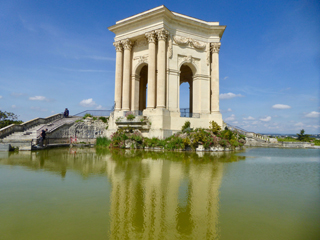
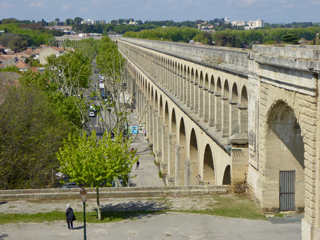
On Easter Sunday, in Baux-de-Provence, the fabulous Carrières de Lumières were a real highlight. A disused limestone quarry has been converted into a venue for impressive sound and light shows, in which the images of famous artists are projected on the walls, ceiling and floor. We experienced an amazing Van Gogh and Japanese woodblock-print art extravaganza that certainly ended the trip on a high note.
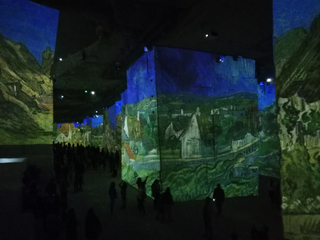

We broke our train ride home with an overnight in the city of Lyon, on the River Rhone. This time, spring was clearly visible, albeit short-lived, as the first weekend home we had snow again. The contrast just highlights the beautiful time we had.
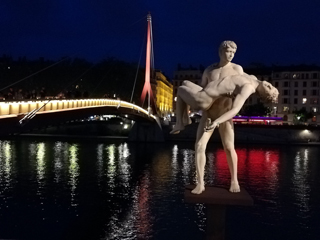
In Switzerland, there is an expression about eating like God in France and that is certainly what we did on this trip! Breakfasts were generally an extended continental buffet affair, lunches a picnic on the road, and dinners an absolute joy! Darina’s favourite dessert was infusion gourmet–herbal tea with a selection of miniature sweets, cakes, mousses, meringues or crème caramel.
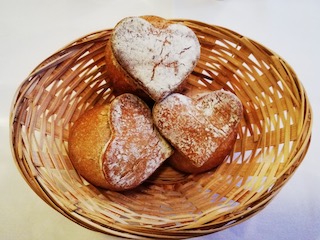
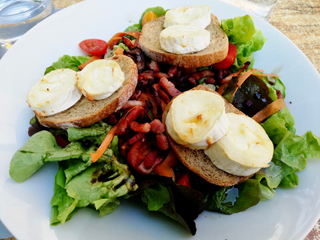
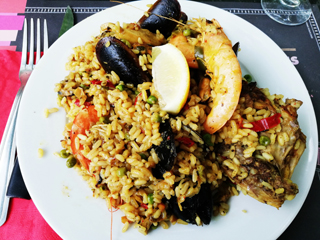
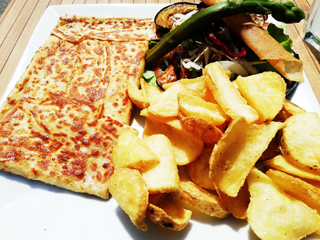
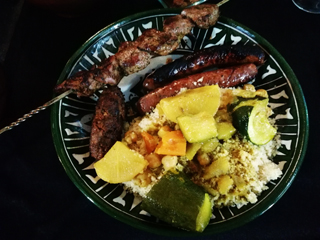
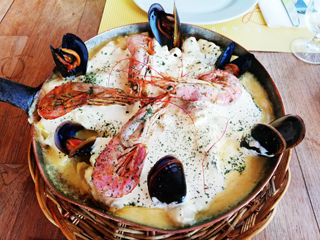
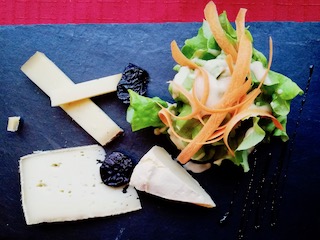
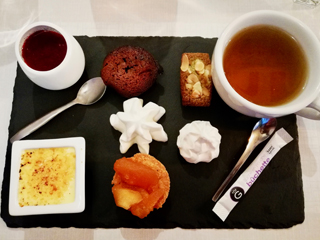
Despite being slightly off-season, we always found a guesthouse/hotel for the night at about 60€ for a double room. Our route wasn’t exactly a classical tourist trail, which may account for the great interest the friendly hosts and locals had in our trip.
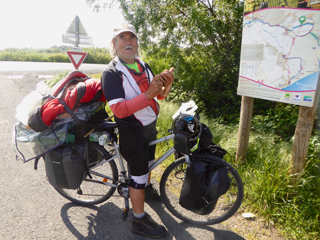
The well-signposted ViaRhôna from Lake Geneva to the Mediterranean extends for 815km in France. Of course, you could do it à la carte like us and include the magnificent gorges of the Vercors and a few Roman ruins in Provence. Either way, it has the makings of a beautiful trip and can accelerate spring if need be. Just be sure to cycle south 😉
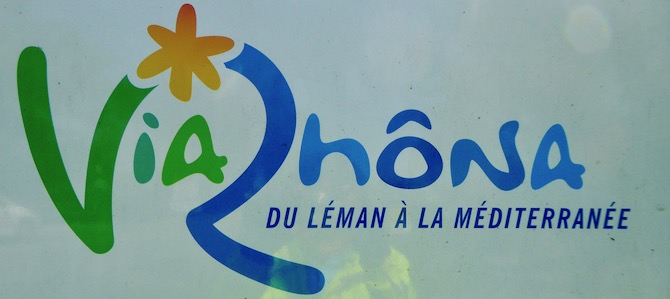
PS: Darina’s friend Jackline was raging that we went to her beloved France without her and insisted that we should apologise not only in person but also on our website. So, here it is: Sorry, Jackline.
PPS: Jackline’s misspelt name is just to check whether she reads the update at all!

